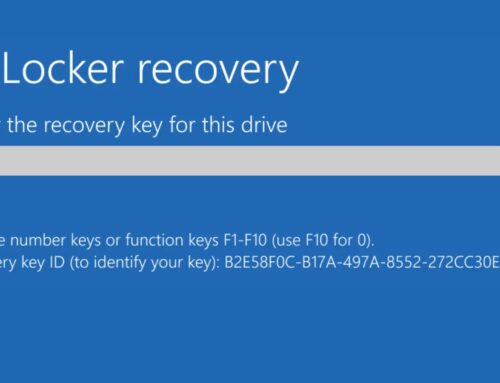
Researchers Spot XZ Utils Backdoor in Dozens of Docker Hub Images, Fueling Supply Chain Risks
The digital supply chain is a complex ecosystem, and a single point of compromise can cascade into widespread vulnerabilities. Recent revelations from Binarly REsearch underscore this sobering reality: more than a year after its discovery, the infamous XZ Utils backdoor has been found lurking within dozens of Docker Hub images. This isn’t just a historical footnote; it’s a critical supply chain threat actively propagating through transitive dependencies.
The Persistent Shadow of the XZ Utils Backdoor
The original discovery of the XZ Utils backdoor captivated the cybersecurity world, exposing a sophisticated attempt to compromise SSH authentication on Linux systems. This incident, tracked as CVE-2024-3094, involved malicious code stealthily inserted into the legitimate xz library, a widely used data compression tool. While rapid community response mitigated the immediate threat on many systems, the current findings reveal the long tail of such highly impactful supply chain attacks.
Docker Hub: A Vector for Propagating Infection
The unsettling aspect of Binarly REsearch’s findings is the identification of these backdoored XZ Utils versions embedded within Docker images readily available on Docker Hub. Docker images serve as fundamental building blocks for modern applications, allowing developers to package software and its dependencies into standardized, portable units. When a malicious component like the XZ Utils backdoor is present in a base image, every subsequent image built upon it inherently inherits the compromise. This “transitive infection” mechanism significantly amplifies the reach and impact of the original vulnerability, turning seemingly benign development practices into potential security liabilities.
Understanding the Supply Chain Ripple Effect
The discovery of the XZ Utils backdoor in Docker Hub images highlights a critical weakness in many organizations’ security postures: the over-reliance on external, unverified components. Developers often pull open-source libraries, base images, and third-party tools without rigorous scrutiny, assuming their integrity. This practice, while enabling rapid development, introduces substantial supply chain risk. A compromised upstream component can silently infect downstream applications, making detection incredibly challenging and remediation a vast undertaking. The ongoing presence of the XZ Utils backdoor in such a critical distribution platform like Docker Hub demonstrates the enduring challenge of securing the software supply chain from root to endpoint.
Remediation Actions for XZ Utils Backdoor in Docker Images
Addressing this persistent threat requires a multi-faceted approach. Organizations leveraging Docker and containerized environments must immediately take action to identify and mitigate exposure.
- Inventory and Scan Existing Images: Conduct a comprehensive inventory of all Docker images, both in registries and in production. Utilize container security scanning tools to identify the presence of known vulnerabilities, particularly focusing on the XZ Utils library and any related dependencies.
- Verify Base Images: Avoid using untrusted or unverified base images from public repositories. Prioritize official or well-maintained base images and consider building your own hardened base images with minimal necessary components.
- Implement Software Bill of Materials (SBOM): Generate and maintain a Software Bill of Materials for all containerized applications. An SBOM provides a detailed accounting of all components, libraries, and dependencies within an image, making it easier to track and identify compromised elements.
- Continuous Monitoring and Rescanning: Implement continuous container scanning in your CI/CD pipeline and runtime environments. New vulnerabilities are discovered daily, and regularly rescanning images ensures ongoing compliance and security.
- Isolate and Rebuild Affected Containers: If compromised images are identified, immediately isolate affected containers and initiate a process to rebuild them using patched or verified components. Do not simply restart or continue to use compromised images.
- Patch Management for Host Systems: Ensure that the underlying host systems running Docker are fully patched and updated, as the XZ Utils vulnerability primarily targets the host’s SSH daemon.
Relevant Tools for Detection and Mitigation
| Tool Name | Purpose | Link |
|---|---|---|
| Trivy | Comprehensive open-source vulnerability scanner for containers, file systems, Git repositories, and more. | https://aquasec.com/products/trivy/ |
| Hadolint | A linter for Dockerfiles to ensure best practices and security in image creation. | https://github.com/hadolint/hadolint |
| Syft | Generates Software Bill of Materials (SBOM) for container images and filesystems. | https://github.com/anchore/syft |
| Grype | Vulnerability scanner for container images and filesystems, leveraging SBOMs from Syft. | https://github.com/anchore/grype |
The Ongoing Battle for Supply Chain Integrity
The persistent discovery of the XZ Utils backdoor in Docker Hub images is a stark reminder that supply chain security is not a one-time fix but an ongoing commitment. Threats like these highlight the need for robust security practices from development to deployment, emphasizing verified components, rigorous scanning, and a proactive posture towards managing transitive dependencies. Organizations must embrace principles of “assume breach” and “zero trust” within their software supply chains, constantly verifying the integrity of every component to protect against insidious, long-tail attacks.





